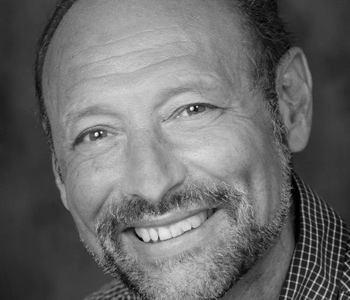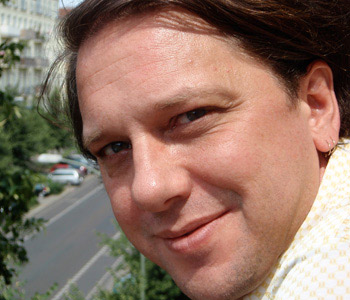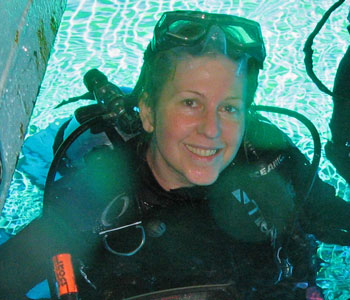Robert Engelman
More: Population, Nature, and What Women Want
Island Press
320 pages, 6 x 9 inches
ISBN 978 1597260190
ISBN 978 1597264433
More offers a new narrative of the human story that highlights the importance of intentional reproduction—wanting a child, and then having one—in the evolution of civilization and in light of our connections with nature. The book provides a history of contraception, natural as well as artificial, but also much more. Through much of our past, population growth has stimulated innovation and human development. But population growth can also give rise to natural resource scarcities and to hazardous social complexities. Today these are major threats on a global scale. Yet population growth could end soon, and for the best of reasons.
What women want, More argues, is more for their children, not so much more children. Or, put another way, women want what men don’t have to ask for: to be sexually active without inevitably risking pregnancy and childbirth. Indeed, throughout history, when women have timed their pregnancies to suit their lives and their environment, populations have grown slowly or not at all. When men control reproduction, by contrast, populations tend to grow unsustainably and sometimes catastrophically. Population growth itself, and nothing intrinsic in human genes or human nature, may well have produced a world that even today remains dominated by males.
More than any male triumph, it was women’s success in giving (and assisting) birth and parenting third and higher-order children to their own parenting age that guaranteed the human takeover of the planet’s landmasses. One of the book’s most novel arguments is that midwives began assisting births as soon as bipedalism began. Midwifery secured this risky evolutionary shift, spurred the development of language, and launched the development of contraception and abortion. Midwives became expert in both of these—at their own peril, especially during the European witchcraft hysteria.
Based on unambiguous differences between women and men (the former give birth; the latter on average have greater upper-body size and strength), More postulates that population growth explains much of the growing complexity and patriarchy of human social organization. The book calls for high-quality reproductive health services for all—including a wide variety of contraceptive options for both sexes and safe abortion—as the single most catalytic ingredient in building an environmentally and socially sustainable world.

Throughout history, when women have timed their pregnancies to suit their lives and their environment, populations have grown slowly or not at all. When men control reproduction, by contrast, populations tend to grow unsustainably and sometimes catastrophically.
People have wrestled with population and the control of reproduction for thousands of years. Yet both of these topics are always sensitive and hence mostly marginalized in literature and public discourse. The reasons are many. Sex is at the root of both. And despite the ubiquity of sex to sell products in modern societies, very few people are really comfortable with sexuality. The word “population” also brings to mind race, ethnicity, immigration, abortion, even the question of whether humanity is a positive or negative force on the earth. Then, of course, there’s religion.
Despite, or perhaps perversely because of their taboo nature, I have been drawn to both the subjects of population and reproduction since launching a career in journalism in the late 1970s. During those years I traveled widely in Latin America, reporting on environmental devastation, poverty, gender discrimination, and civil conflict. For a time in the late 1980s, I reported out of Washington, D.C. on health, science and the environment for a chain of U.S. newspapers, deepening my interest in demography and gender issues. Early in the 1990s I left reporting altogether to study population’s influence on the environment for a non-profit organization that advocated improved access to family planning services worldwide. It was the 15 years I spent with this organization, Population Action International, that introduced me to women striving to manage their own pregnancies and childbearing on every continent. The stories they told me, along with those of many men, provide the “human face” for a book that ranges over large swaths of human history and geography.
Working in this field I had long felt frustrated both by the public reticence about population and reproduction and by the related misconception that there’s nothing anyone can do about population growth. “You can’t stop people from having children,” I kept hearing—as though stopping birth was the only way to end population growth. My research and my conversations with women convinced me that if humanity could achieve the famous Planned Parenthood goal of “every child a wanted child,” population growth would soon end—with a wide diversity of chosen family sizes that would average, in most societies, two or fewer children per woman.
Given the frightening environmental realities we face in the early twenty-first century, and the huge environmental benefits that would accrue from an early end to population growth, the prospect that such an end could occur through women’s intentions and choices seemed a hypothesis worth exploring—not only in the context of the present, but through its roots in the distant past.
I like a book that tells you what it’s about on the very first page. Mine does—in fact on a page numbered with a roman numeral. Open it up to the first page of the preface, ix, and if that interests you, turn the page. What these two pages express is that, despite my own lack of direct insight, my interest in women’s reproductive intentions—“what women want”—was launched by meeting two women, one American, the other Zambian. The American proposed that population problems would fade away if all women could decide for themselves whether and when to become pregnant and give birth. The Zambian offered the luminous thought that “the environment begins in the womb of a woman and ripples out all over the world.” These two ideas formed a guiding vision for my subsequent work on population, the environment and women’s lives, which ultimately led to the writing of More. If those thoughts intrigue a reader—particularly if the reader enjoys stories of real people and educated speculations on why prehistory and history unfolded as they did—I think I can promise a satisfying read. If not, there are lots of other books in the store.
More uses stories and wide-ranging research to move briskly from the origins of humanity to speculation about the human future. Readers short on time or less interested in the past may want to focus on the introduction, the first chapter and the last two. For scholars and researchers, the book contains 23 pages of notes and a 29-page bibliography of written sources. For a random couple of pages in the middle of the book, open on page 176. There I tell the story of Mary Wollstonecraft, a pioneering feminist who died after giving birth to Mary Shelley. (Shelley went on to author Frankenstein.) Wollstonecraft understood, much more than did her better-known contemporary Thomas Robert Malthus, how to successfully slow the unsustainable growth of population. The secret: something women must have whispered among themselves for tens of thousands of years but which Wollstonecraft was among the very first to write down.

How much more likely will our efforts be to move into balance with nature if we encourage an early end to population growth—and indeed live through a short period of gradual population decline? And what other strategies are easily available that accomplish a long-term global good so powerfully by providing an immediate personal one: autonomy to give birth only when a woman and a partner are committed to raising a new human being to adulthood?
The planet on which human beings evolved and thrived is threatened as never before with changes humans themselves are causing—in climate, especially, but also in the loss of species, forests, freshwater resources, fertile soils, and toxic-free ecosystems. Encouraging the end of population growth won’t immediately solve any of these problems. The demographic growth has already gone on too long and helped stoked consumption patterns, technologies and patterns of social inequality that lie more directly than population as such behind the huge risks we face. But how much more likely will our efforts be to move into balance with nature if we encourage an early end to population growth—and indeed live through a short period of gradual population decline? And what other strategies are easily available that accomplish a long-term global good so powerfully by providing an immediate personal one: autonomy to give birth only when a woman and a partner are committed to raising a new human being to adulthood?
I wrote More out of the conviction—strengthened over three decades of exploring these connections—that influencing the trajectory of human population is the most accessible but least understood component of the transition we desperately need to make to a sustainable society. I’m a son, a brother of sisters, a husband, and the father of a daughter. But I confess I didn’t come to an interest in women’s well-being purely out of a sense of gender justice. The more I learned about women’s central position in population change, nonetheless, the more I came to realize that everything I call for in More is worth doing regardless of any influence on human demography or the natural world. It’s simply right to arrive at real equality of the sexes and to assure that women can achieve what men don’t have to ask for: sexuality without the risk of pregnancy. What’s exciting is that this is also a path to a world in which human beings can live in balance with the earth and each other. I hope More makes that an idea worth exploring—and acting on.




We don't put paywalls. We don't distract you with ads. We don't sell your data.
Please help to keep this running!